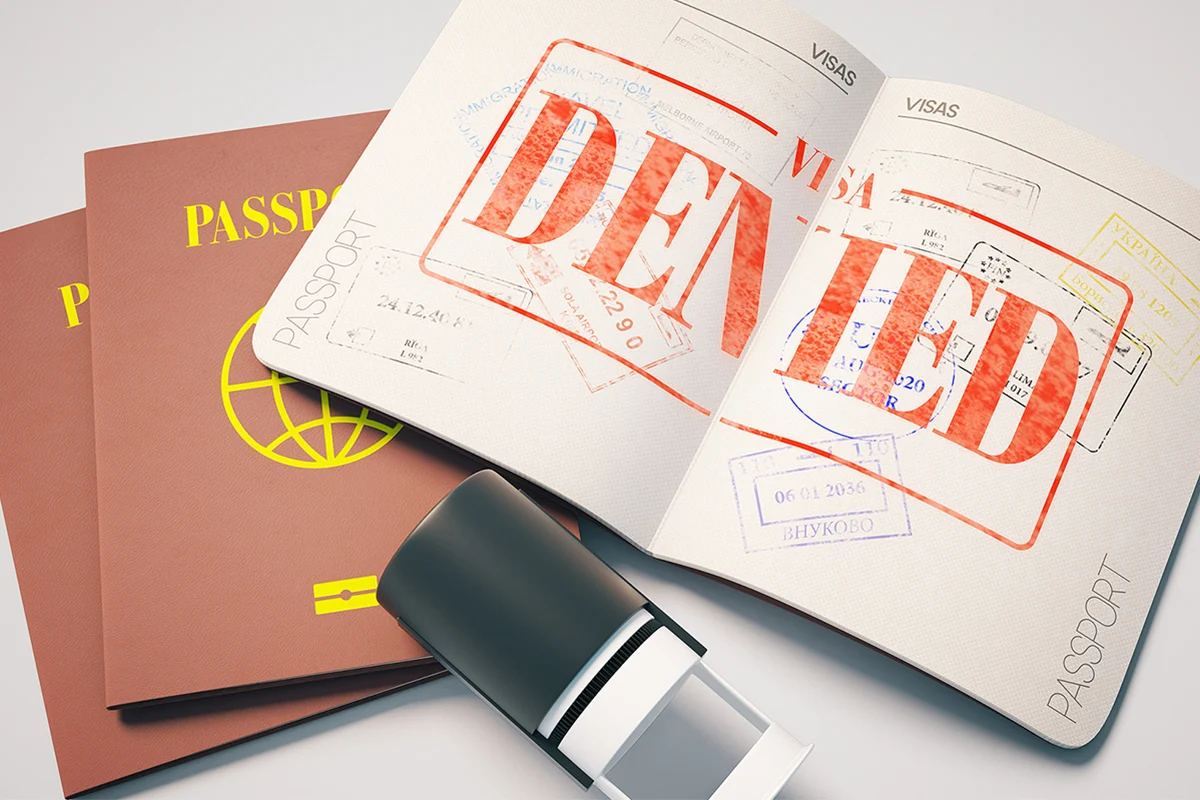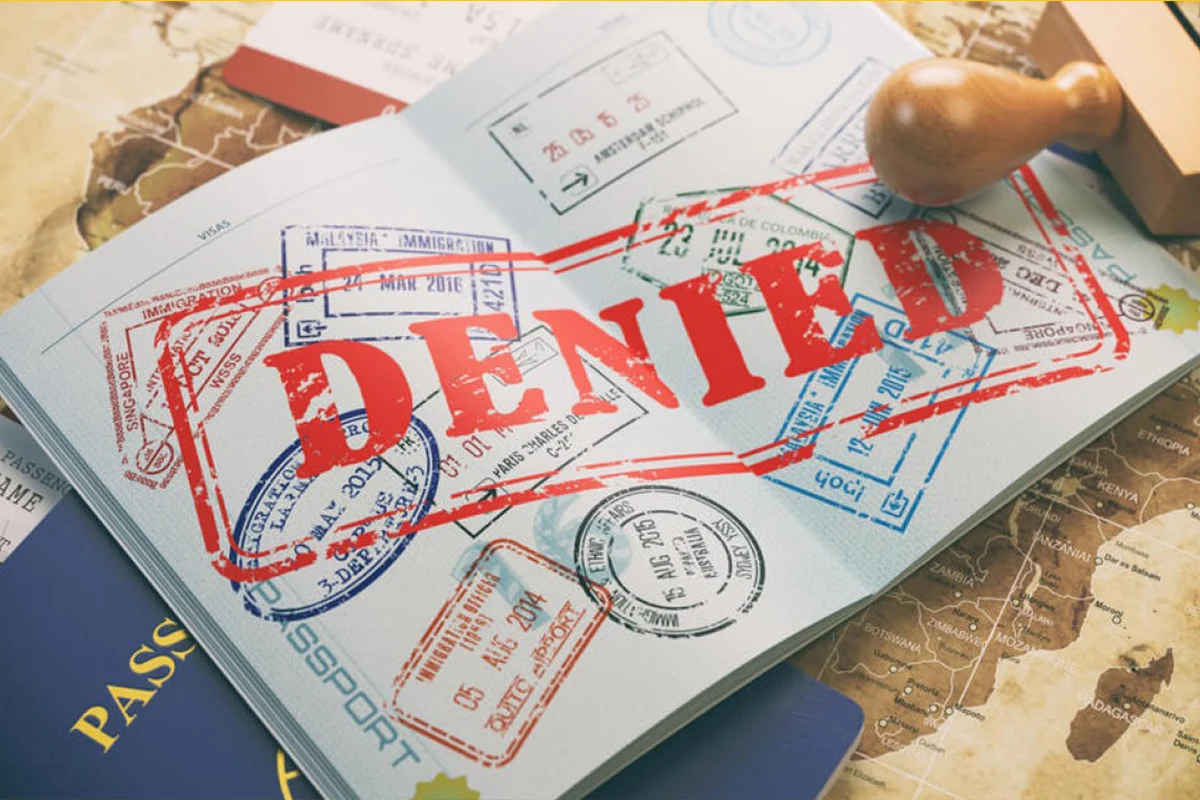Turnkey relocation to Spain from 6 weeks
We will help you to obtain a Spanish residence permit for the whole family with a minimum tax burden!
Read more
Get a free consultation
From 0 €
Tax burden per month
From 6 weeks
Term for obtaining a residence permit
5 years
Until permanent residence permit


What to Do If Your Spanish Visa Is Denied
A visa refusal means the applicant did not fully meet the requirements set by the authorities for entry and residence in Spain. In most cases, Spanish visa denials occur due to mistakes in the application form or submission of incomplete documentation. As a member of the Schengen Area, Spain is obligated to provide written explanations for visa refusals.
 A Spanish visa is only issued when all required documents are properly submitted. Otherwise, a refusal stamp is placed in the passport where the visa would normally go. This stamp includes letter codes (A–D) and numbers (1–4), with the following meanings:
A Spanish visa is only issued when all required documents are properly submitted. Otherwise, a refusal stamp is placed in the passport where the visa would normally go. This stamp includes letter codes (A–D) and numbers (1–4), with the following meanings:
 If your visa is denied, remember that you have the right to appeal. First, stay calm and approach the situation rationally—stress and frustration can negatively impact your appeal or interview. Consider discussing your emotions with someone, doing physical activity, engaging in a creative activity or meditation, and focusing on long-term goals.
Carefully review the reasons for refusal and determine which documents or pieces of information need to be revised. It is highly advisable to consult with a visa expert or legal professional, preferably one fluent in both your native language and English.
If your visa is denied, remember that you have the right to appeal. First, stay calm and approach the situation rationally—stress and frustration can negatively impact your appeal or interview. Consider discussing your emotions with someone, doing physical activity, engaging in a creative activity or meditation, and focusing on long-term goals.
Carefully review the reasons for refusal and determine which documents or pieces of information need to be revised. It is highly advisable to consult with a visa expert or legal professional, preferably one fluent in both your native language and English.
 You can also apply for a Schengen visa through a different Schengen country. However, keep in mind that the Schengen countries share a common visa information system. If the refusal from Spain was based on serious grounds, a new application—even to another country—may still be denied.
You may also consider applying for a different type of visa, such as a tourist, student, or business visa. In some cases, changing the consulate is the fastest way to obtain a Schengen visa.
You can also apply for a Schengen visa through a different Schengen country. However, keep in mind that the Schengen countries share a common visa information system. If the refusal from Spain was based on serious grounds, a new application—even to another country—may still be denied.
You may also consider applying for a different type of visa, such as a tourist, student, or business visa. In some cases, changing the consulate is the fastest way to obtain a Schengen visa.
Go back to the blog
Analyzing the Reasons for Refusal
 A Spanish visa is only issued when all required documents are properly submitted. Otherwise, a refusal stamp is placed in the passport where the visa would normally go. This stamp includes letter codes (A–D) and numbers (1–4), with the following meanings:
A Spanish visa is only issued when all required documents are properly submitted. Otherwise, a refusal stamp is placed in the passport where the visa would normally go. This stamp includes letter codes (A–D) and numbers (1–4), with the following meanings:
- A1–A3 – The applicant did not attend the interview.
- A4 – Permanent refusal due to violations within the Schengen Zone.
- B1–B3 – Refusal of a transit visa.
- B4 – Permanent refusal of a type B visa by decision of the consulate.
- C1 – Errors in applying for a tourist visa.
- C2 – The applicant is invited for an interview and must attend at the scheduled time.
- C3 – Missing additional documents.
- C4 – Tourist visa refused for reasons similar to previous “4” category refusals.
- D4 – Similar refusal for a type D visa.
Common Reasons for Visa Refusal
- Missing documents: For example, lack of hotel booking confirmation, flight reservations, itinerary, invitation letter, or proof of financial means.
- Application errors: This includes submitting the wrong photo format, incorrect data, or inaccurate dates.
- Insufficient financial means: Applicants must submit a bank statement proving sufficient funds to support their stay. A refusal may result from low account balances or absence of a sponsor letter. If the host claims financial responsibility but cannot prove it, the application may also be denied.
- Issues with previous visas: Refusals may occur if the applicant previously misused a visa (e.g., overstaying or misrepresenting the purpose of travel).
- Other reasons: These may include having relatives who violated visa rules, past disturbances of public order, a criminal record, or submission of fraudulent documents.
What to Do After a Visa Refusal
 If your visa is denied, remember that you have the right to appeal. First, stay calm and approach the situation rationally—stress and frustration can negatively impact your appeal or interview. Consider discussing your emotions with someone, doing physical activity, engaging in a creative activity or meditation, and focusing on long-term goals.
Carefully review the reasons for refusal and determine which documents or pieces of information need to be revised. It is highly advisable to consult with a visa expert or legal professional, preferably one fluent in both your native language and English.
If your visa is denied, remember that you have the right to appeal. First, stay calm and approach the situation rationally—stress and frustration can negatively impact your appeal or interview. Consider discussing your emotions with someone, doing physical activity, engaging in a creative activity or meditation, and focusing on long-term goals.
Carefully review the reasons for refusal and determine which documents or pieces of information need to be revised. It is highly advisable to consult with a visa expert or legal professional, preferably one fluent in both your native language and English.
Appealing a Visa Refusal
If your Spanish visa was denied, you can submit an appeal. This involves preparing documentation and writing an appeal letter in English or Spanish, which must be submitted in person or via an authorized representative to the Consulate or the High Court. The document must be personally signed. Appeals submitted incorrectly or by unauthorized persons will not be accepted. Your appeal should include the following:- Last name and first name
- Date and place of birth
- Passport details
- Date of refusal
- Residential address
- Email address
- Phone number
Reapplying for a Visa
Instead of appealing, you may submit a new application with improved documentation. To apply again for a Schengen visa after refusal, you should:- Review previous mistakes carefully
- Gather additional supporting documents
- Seek expert consultation
Alternative Options
 You can also apply for a Schengen visa through a different Schengen country. However, keep in mind that the Schengen countries share a common visa information system. If the refusal from Spain was based on serious grounds, a new application—even to another country—may still be denied.
You may also consider applying for a different type of visa, such as a tourist, student, or business visa. In some cases, changing the consulate is the fastest way to obtain a Schengen visa.
You can also apply for a Schengen visa through a different Schengen country. However, keep in mind that the Schengen countries share a common visa information system. If the refusal from Spain was based on serious grounds, a new application—even to another country—may still be denied.
You may also consider applying for a different type of visa, such as a tourist, student, or business visa. In some cases, changing the consulate is the fastest way to obtain a Schengen visa.


 11/05/2025
11/05/2025  Reading time: 5 min
Reading time: 5 min 





